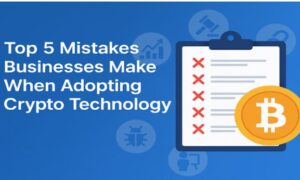Introduction:
In the ever-evolving landscape of project management, the role of software has become increasingly pivotal. As businesses strive for greater efficiency, the latest trends in project management software are shaping the way teams collaborate, plan, and execute tasks. In this article, we delve into the key developments that are unlocking efficiency and transforming the project management software space.
Streamlining Workflows with Automation:
One of the prominent trends in project management software is the integration of automation to streamline workflows. Automation empowers teams to reduce manual tasks, allowing them to focus on more strategic aspects of project execution. Whether it’s automating repetitive processes or setting up triggers for specific actions, project management software is becoming smarter, leading to enhanced productivity.
Take, for instance, the automated task assignment feature, which allocates responsibilities based on predefined criteria. This not only saves time but also ensures that team members are assigned tasks based on their expertise, optimizing the overall project workflow.
Collaboration in Real-Time:
The Rise of Cloud-Based Platforms:
Gone are the days of siloed project information and delayed updates. Cloud-based project management software has emerged as a game-changer, facilitating real-time collaboration among team members regardless of their geographical location. This trend not only fosters seamless communication but also ensures that all stakeholders have access to the most up-to-date project information.
Teams can collaborate on documents, share feedback, and make instant updates, fostering a dynamic work environment. This accessibility enhances overall project visibility, making it easier for project managers to track progress and make informed decisions promptly.
Embracing Agile Methodologies:
Agile methodologies have revolutionized project management, and software is at the forefront of this transformation. Agile principles prioritize adaptability, collaboration, and customer feedback. Project management software, therefore, incorporates features that align with agile practices, allowing teams to work in iterative cycles and respond swiftly to changing project requirements.
Features like Kanban boards and sprint planning tools enable teams to visualize their work, manage priorities, and adapt to evolving project needs. This agile approach not only increases project flexibility but also enhances the overall quality of deliverables.
User-Friendly Interfaces for Enhanced User Experience:
The user experience (UX) of project management software has become a focal point in recent trends. As software developers recognize the importance of user-friendly interfaces, they are investing in creating platforms that are intuitive and easy to navigate. A seamless UX ensures that team members can quickly adopt the software, reducing the learning curve and increasing overall efficiency.
Intuitive dashboards, drag-and-drop functionalities, and customizable views are some of the features contributing to a more user-centric experience. This shift towards user-friendly interfaces is a testament to the recognition that software should not be a barrier but an enabler for effective project management.
Data Analytics Driving Informed Decision-Making:
Data analytics is playing a pivotal role in project management, offering valuable insights that empower teams to make informed decisions. Modern project management software incorporates robust analytics tools that provide visibility into key performance indicators, project timelines, and resource allocation.
By leveraging data analytics, project managers can identify potential bottlenecks, optimize resource utilization, and forecast project timelines more accurately. This data-driven approach not only enhances decision-making but also contributes to the continuous improvement of project management processes.
Enhanced Security Measures for Data Protection:
As businesses handle sensitive project information, the security of data within project management software is of utmost importance. Recent trends indicate a heightened focus on implementing enhanced security measures to protect against cyber threats and unauthorized access.
End-to-end encryption, multi-factor authentication, and secure cloud storage are becoming standard features in project management software. These measures not only safeguard sensitive data but also instill confidence among users, fostering a secure digital work environment.
Integration with Third-Party Tools:
Recognizing the diversity of tools used in different aspects of project management, software developers are increasingly emphasizing seamless integrations. The ability of project management software to integrate with other essential tools enhances overall workflow efficiency.
For example, integration with communication tools like Slack or Microsoft Teams ensures that project-related discussions and updates are centralized within the project management platform. This interconnected approach reduces the need to switch between multiple applications, streamlining communication and collaboration.
Mobile Accessibility for On-the-Go Project Management:
In a world where remote work and on-the-go collaboration are prevalent, mobile accessibility has become a crucial trend in project management software. Mobile applications enable team members to stay connected with project updates, tasks, and discussions even when away from their desks.
Whether it’s reviewing project timelines during a commute or providing quick feedback on a document while attending a meeting, mobile accessibility enhances the flexibility and responsiveness of project teams. This trend aligns with the evolving nature of work, ensuring that project management is not bound by physical locations.
Incorporating Virtual Reality for Enhanced Visualization:
A futuristic trend in project management software involves the incorporation of virtual reality (VR) for enhanced project visualization. VR technology enables teams to immerse themselves in project environments, providing a unique perspective that goes beyond traditional 2D representations.
Imagine project managers conducting virtual walkthroughs of construction sites or architects visualizing building designs in a virtual space. This trend not only enhances collaboration but also adds a new dimension to project planning and execution.
Sustainable Practices in Software Development:
Beyond efficiency, sustainability has become a key consideration in software development. Project management software trends are reflecting a commitment to sustainable practices, emphasizing energy efficiency, reduced carbon footprints, and eco-friendly features.
Developers are optimizing software code, implementing energy-efficient algorithms, and utilizing cloud resources responsibly. This not only aligns with global sustainability goals but also positions project management software as a responsible choice for businesses committed to environmental stewardship.
Continuous Learning and Adaptation:
In the dynamic landscape of project management, the ability to learn and adapt is crucial. Project management software trends highlight a commitment to continuous improvement, with regular updates, feature enhancements, and user feedback loops.
Developers actively seek user input to identify areas for improvement, ensuring that the software evolves to meet the changing needs of project teams. This iterative approach fosters a collaborative relationship between software developers and users, resulting in a tool that grows alongside the ever-changing demands of project management.
Conclusion:
The latest trends in project management software are reshaping the way teams collaborate, plan, and execute tasks. From automation and cloud-based collaboration to agile methodologies and data analytics, these trends are unlocking efficiency and driving innovation in project management. As software continues to evolve, businesses can harness these trends to enhance their project management processes, ultimately achieving greater success in their endeavors. Stay tuned for the next wave of advancements that will further propel the efficiency and effectiveness of project management software in the future.

































